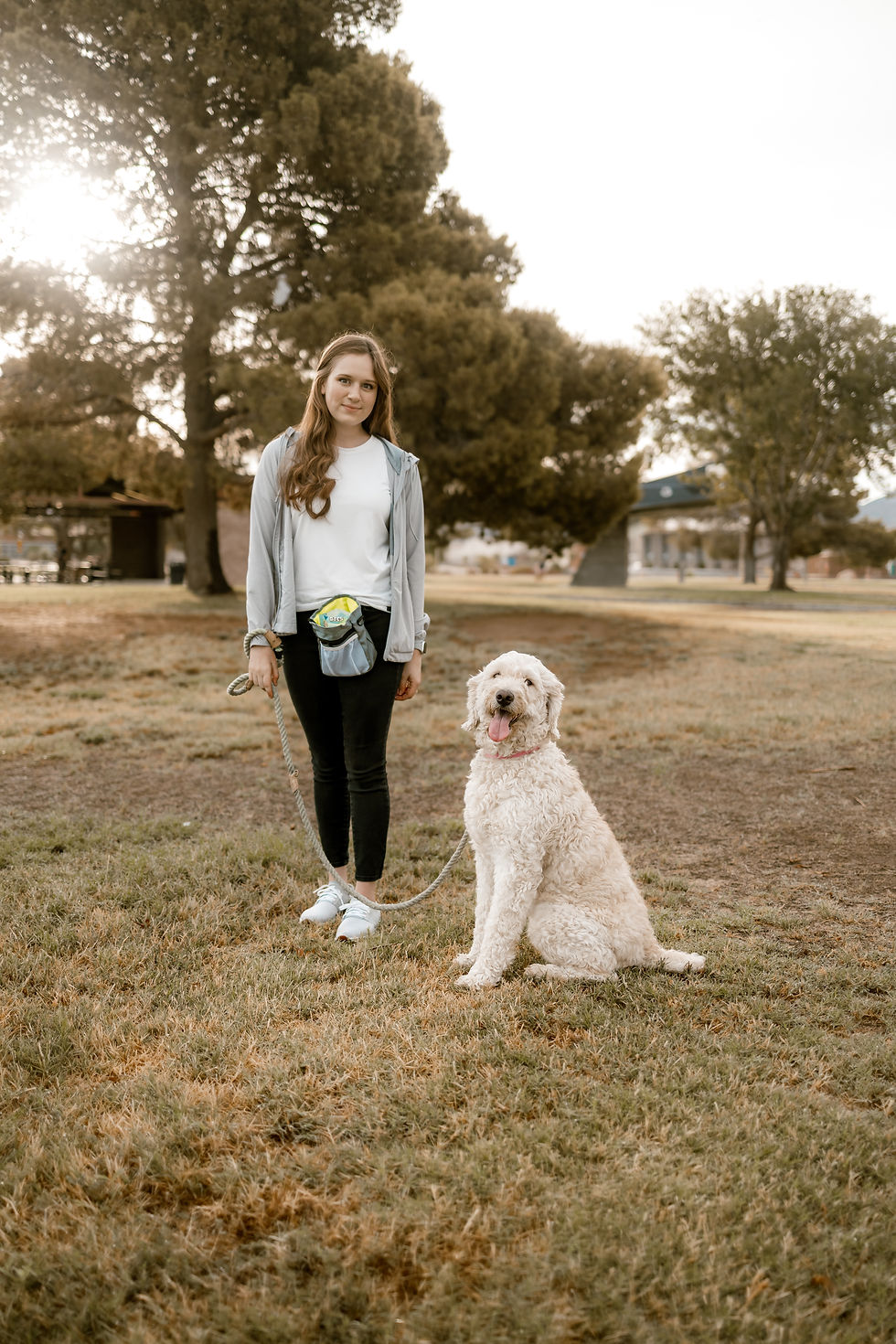5 Reasons Why Your Dog is Barking
- Megan Crow

- Feb 1, 2022
- 4 min read

Barking is one of the many ways dogs communicate. Listening to what they are saying when they bark can build better connections with your dog and solve problems quicker
Barking is an essential form of expression for dogs, similar to how humans rely on their voice for speaking. It would be cruel to expect a dog to never bark or punish them for doing so. The issue with barking arises when it becomes a nuisance. If we determine the root cause for excessive barking, we can usually decrease it so the household can relax
So why do dogs bark? There are a myriad of reasons, but barking will generally fall under these types:
Excitement barking
Warning barking
Fear barking
Guard barking
Learned barking
Rugaas, T. (2008). Barking: The sound of a language. Dogwise.
1. Excitement Barking
Excitement barking is a sharp and high pitched yipping, with little breaks between barks. Generally this type of barking occurs during high excitement periods like an owner arriving home, or when a dog realizes they are going out. This barking is indicative of the dog expressing happy emotions! My dachshund Tuna is not a frequent barker, but you can be sure he will let out a handful of yips when he hears my husband coming home through the garage!
Dogs who are exhibiting excitement barking will often show other signs of happiness like a loose body, jumping, and fast tail wagging. They will likely not be able to keep still!
Excitement barking becomes an issue when dogs inadvertently work them into such a state of arousal that they might become stressed. If you find this is the case, try keeping your own demeanor calm. Give your dog time to calm down before you engage him after coming home, and instruct guests to do the same.
2. Warning Barking
Warning barking sounds like distinct, clear "woof's." It has the dual use of alerting others as well as warning a possible intruder away. Warning barking can become a nuisance to dog owners when the dog perceives their warnings are not being heeded. This leads to more barking as the dog realizes one bark doesn't achieve their goal. When the Amazon delivery person knocks, I get up and acknowledge my dachshunds barking by calmly going to check the door. I have trained them to calm down when I say "Thank You!" by rewarding them for calm behavior afterwards. Some breeds are more predisposed than others to alert bark. In these cases, it is most helpful to have extensive positive socialization through puppyhood to potential triggers the dog may alert to as an adult.
3. Fear Barking
When dogs bark because of fear, it often sounds similar to excitement barking. The body language, however, is very different. Fear barking may be accompanied by tense bodies, restlessness, howling, scratching, and other anxiety-type behaviors. No matter how frustrated you may be, don't punish the dog while he is afraid! It will only make the behavior harder to deal with in the future. There are grades of fear ranging from uncertainty to full blown panic. Separation anxiety and fear-based reactivity are common culprits, and require specific training to address. Prevention is the best cure. Ensure your dogs get adequate socialization as puppies to mitigate fearful responses as an adult.
4. Guard Barking
Guard barking is often interspersed with growling. This barking occurs when dogs feel threatened and is trying to make the threat go away.
A dog who is in guard barking mode will have a tense body posture, and possibly lunge towards the threat. They may also exhibit piloerection (the hair along the spine stands up). Punishing this type of barking will only serve to make the guarding response faster and stronger next time. Imagine what happens when an owner uses a e-collar on their dog for growling when they see another dog. Each time the dog is punished for growling, they may be associating the painful shock to what they originally felt threatened by. Eventually, the threatened dog may explosively respond without any warning since they learned that the growl is not enough to keep the perceived threat away.
Dogs have the right to defend themselves, the behavior is written into their DNA; they would have died out long ago if they did not exhibit behaviors like guarding. The key is being aware of what a dog might feel threatened by, and managing the situations so they don't guard more than necessary.
5. Learned Barking
Learned barking happens when the environment or owner unintentionally rewards barking. This can occur when a dog is asking for attention, when the doorbell rings, or other potentially exciting situations. You can tell it is a learned barking pattern when the dog barks, stops, and looks around (usually for the owner).
My older dachshund Murphy is notorious for his learned barking patterns. Ball under the couch? BARK BARK BARK *check back to make sure we heard* BARK BARK BARK. Cutting any food on a cutting board? It must mean it's for him. Cue BARK BARK BARK *check to make sure we heard* BARK BARK BARK. Nearing his dinner time? Go to pantry and BARK BARK BARK *run over to us to make sure we heard* BARK BARK BARK. They are very demanding sounding barks!
The key to these learned barking patterns is to not acknowledge them. Doing so acts as a reinforcer for continued barking. Instead, ask the dog to do an incompatible behavior like Sit, Down, Watch Me, etc. before continuing. Mitigating the situations causing learned barking is the first step, and training an incompatible behavior is the next. For Murphy, this looks like picking up the toys before he can shove them under the couch, or giving him a food puzzle like a stuffed Kong to work on while we cut food on the cutting board.
Things To Consider
Barking is natural and an essential way dogs express themselves with. There is no way to humanely stop it altogether. When dogs bark, they are saying something they want us to understand. Meet your dog's needs, and barking will invariably decrease to a manageable level.




Comments